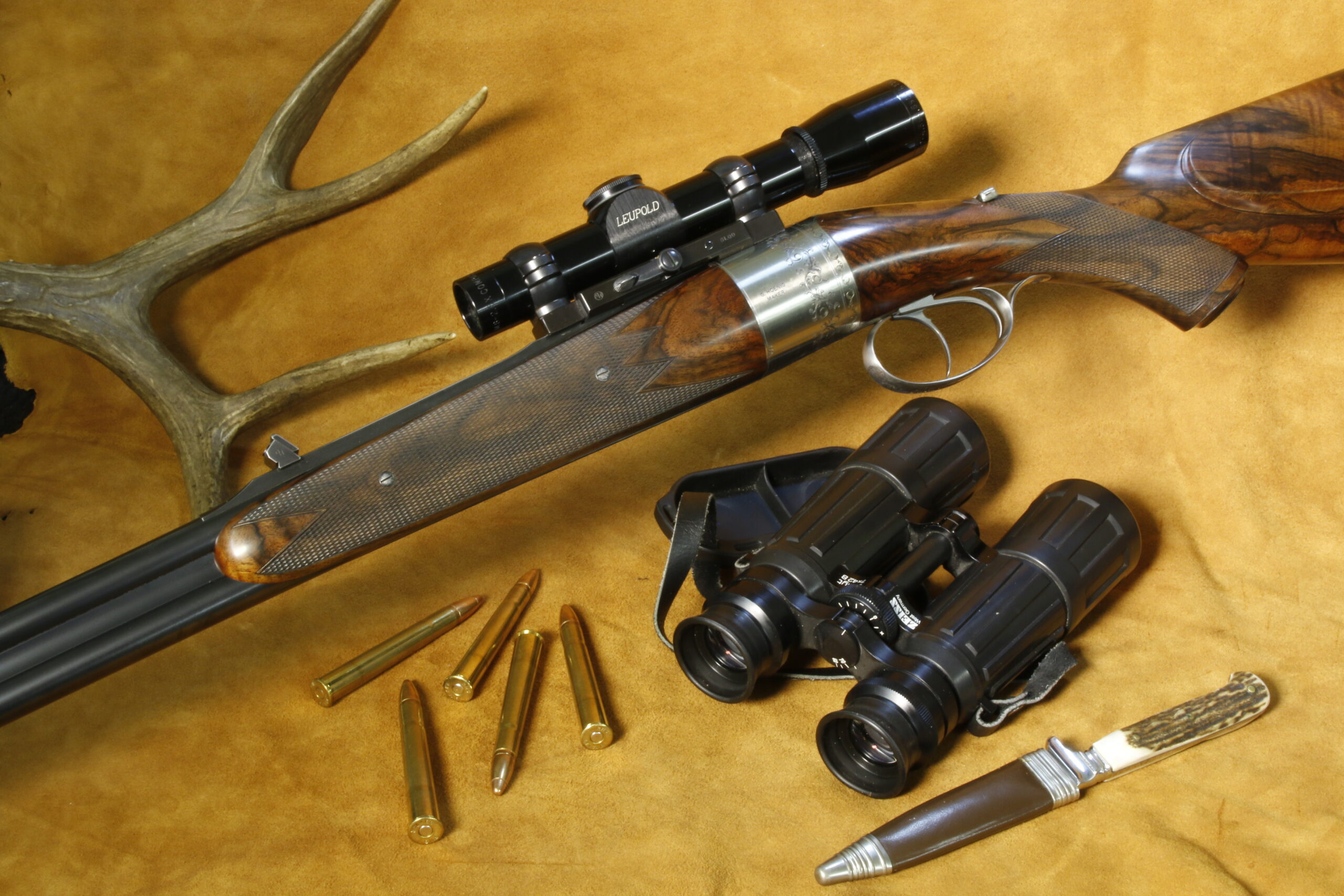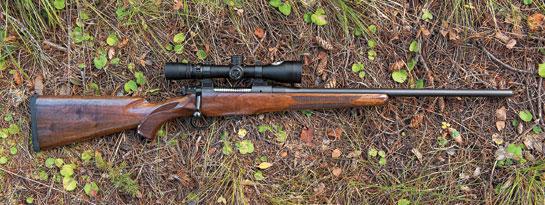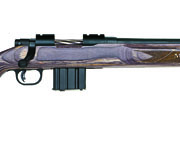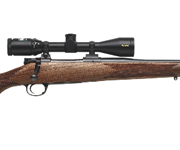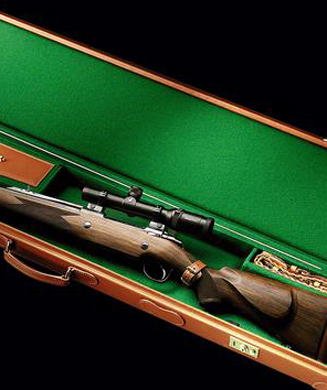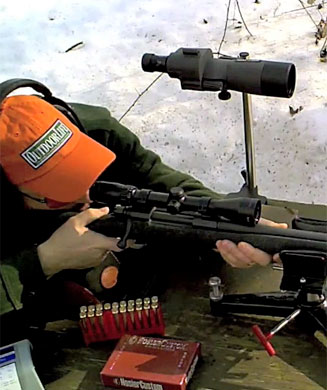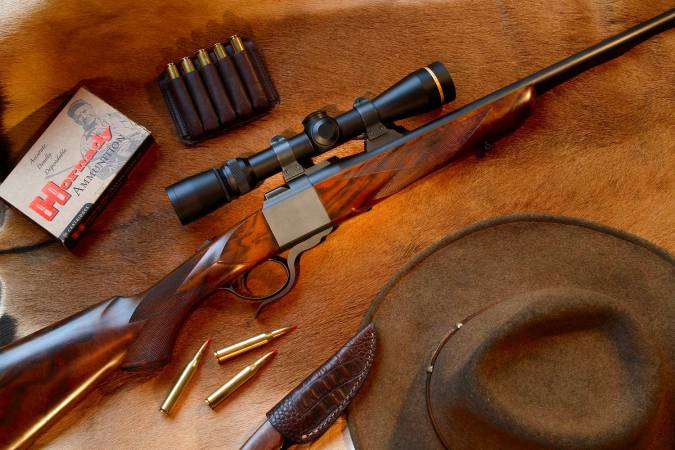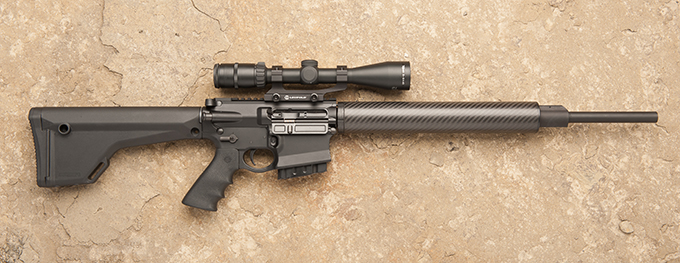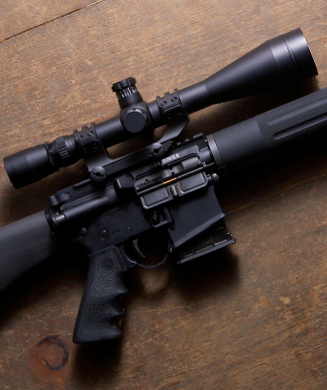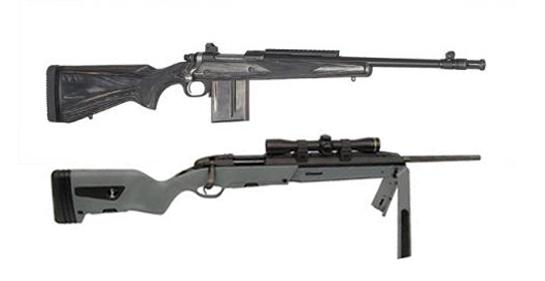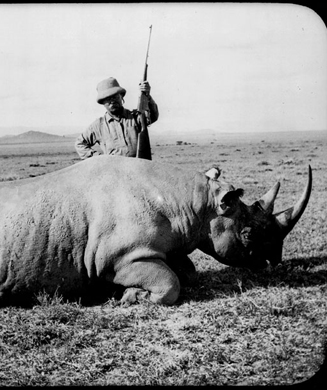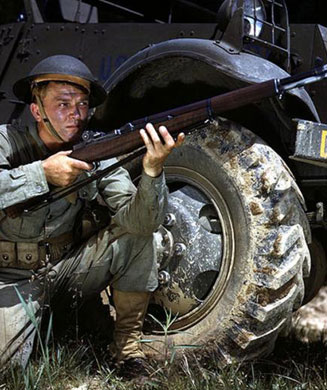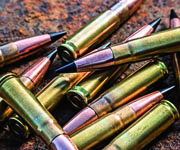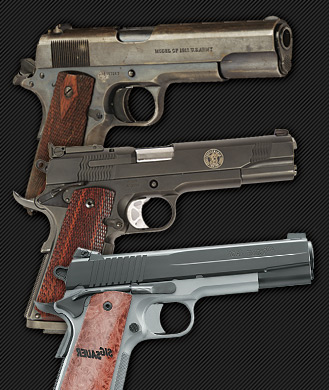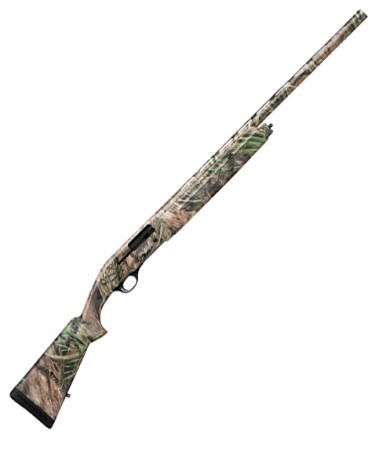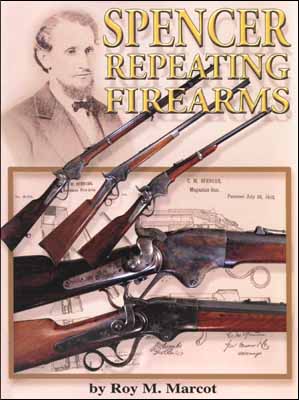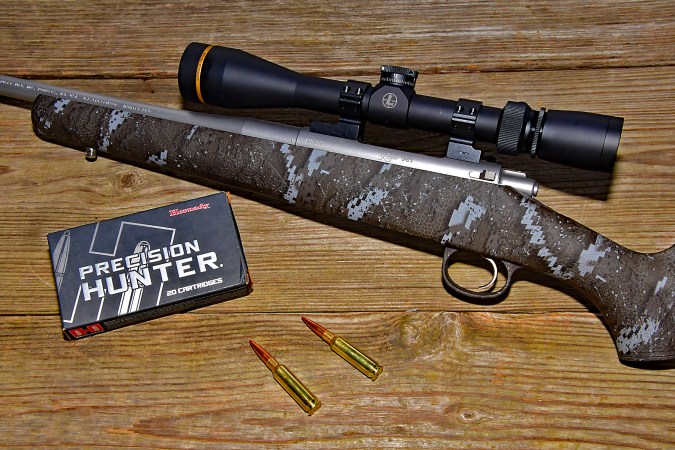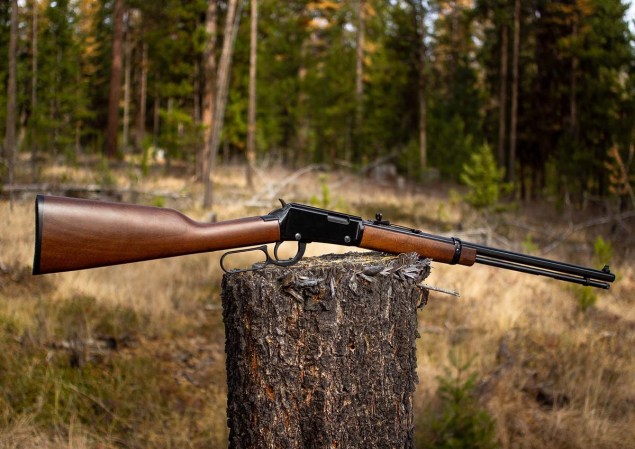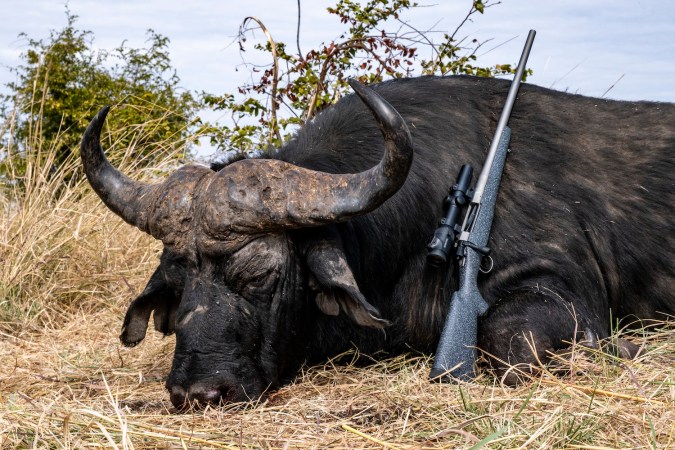We may earn revenue from the products available on this page and participate in affiliate programs. Learn More ›
Most American shooters know John Moses Browning as the inventor of the famous Model 94 Winchester lever action, M97 pump shotgun, Superposed over/under shotgun, Auto-5 autoloading shotgun, Colt 1911 handgun, and many more iconic firearms. But Browning wasn’t the only mechanical genius with a flair for making superb guns. There were other engineers who built equally influential firearms. They were simply overshadowed—rifle makers in particular—by Browning.
In that last 120 years, there have been several exquisite break-action, lever-action, and bolt-action rifles made by other gunmakers across the globe. In no particular order, these are the best sporting rifles (and most influential production rifles) built by folks without the last name Browning.
1. Mauser M98

Shoving forward a bolt of steel to lock a self-contained cartridge in a rifle’s chamber started with Johann von Dreyse’s Needle Gun of 1841. The concept evolved over the years until Peter Paul Mauser put all the pieces together in a rugged, durable, extremely strong, controlled-round-feed, front-locking, dual-lug Model 1898 Mauser. This rifle was so well designed that it’s still manufactured today. Virtually every successful bolt-action hunting rifle since the M98 has borrowed heavily from it.
What makes the M98 such a gold-medal standard are its mechanical simplicity, strength, and attention to detail. For instance, the action contains incredible pressures via two massive steel locking lugs at the front of the bolt body, plus a third, backup safety lug near the rear of the bolt. The front lugs turn into matching recesses in the front receiver ring. The mechanical camming action enables shooters to “manhandle” dirty and even slightly oversized cartridges into the chamber. After firing, Mauser’s massive and incredibly strong external claw extractor grabs a wide section of the cartridge rim to yank it free.
Thanks to Mauser’s insightful design, his extractor grasps each cartridge rim the moment the front bolt face nudges it out of the vertical stack magazine. The claw then secures the entire cartridge against the bolt face to control it for a straight-line trip into battery. Should an excited shooter fail to completely close and lock the chamber before pulling the bolt back to cycle another round, the claw brings the unfired cartridge out before picking up a fresh round. This prevents embarrassing and potentially deadly jams.
The M98 features many more fine points and mechanical innovations like cartridge-specific magazines that hold rounds at the shoulder. This prevents bullet tips from battering into the steel magazine box during recoil. A three-position safety locks the bolt when fully engaged. In its middle position the safety unlocks the bolt while still blocking the firing pin. Rounds can be manually stripped from the magazine and ejected without risk of firing. But an easier way to empty the magazine is to operate the M98’s hinged floorplate. German precision and attention to detail added performance and prestige to the Mausers, thousands of thousands of which have been converted from military to sporting use, thousands more of which were built for sport hunting from the get-go.
2. Winchester M70

Mauser’s M98 features have been heavily copied and refined, starting with the M1903 Springfield bolt-action, a design so similar Mauser sued over it. More famous, however, is Winchester’s iconic M70, which borrowed many of Mauser’s ideas—namely that outside claw extractor—plus many of the Springfields. Given all the spectacular rifles Browning created for Winchester, you’d imagine the Model 70 was his. No such luck. Unspecified Winchester engineers cooperated to refine the Mauser and Springfield systems to create the M70 in 1936.
A big part of this refinement was moving Mauser’s vertical, swing-over safety lever to the right side of the bolt where it does not block the sights. Another refinement was the angle of the bolt handle, low and swept back to place the ball knob nearly level with the trigger for fast acquisition. A gas escape port in the right side receiver ring enhanced safety by giving gases from a ruptured case an outlet. Winchester fitted its M70s with a one-piece steel trigger guard/hinged floorplate, considered durable, strong, and the best of the best, though it contributes nothing to accuracy or cycling function. What did contribute to accuracy was the excellent, simple trigger that could be easily and fully adjusted for tension and overtravel.
Contributing to the M70’s appeal was its simple, no frills stock lines tailored for hunting, not showing off, although with marbled walnut and fine-line checkering, a high grade M70 is a gorgeous gun, especially the Featherweight version with its fleur de lis pattern and slim, subtle Schnabel fore-end. The M70 made a name for itself from the wild sheep pastures of Alaska to the buffalo swamps of southern Africa. And it’s still going strong as one of the best sporting rifles of all time.
3. Ruger Mark II

Ruger’s Mark II and today’s Hawkeye bolt-actions are also closely related to the Mauser, both using the claw extractor, controlled-round-feed, rear blade style ejector, and three-position safety. So why is the Ruger one of the most successful sporting rifles Browning didn’t invent?
The Mark II is an evolution of the original M77, which was a hybrid between the CRF and push feed actions. The M77 featured the big, external claw extractor, but also a plunger ejector in the bolt face. Thus is was a push feed action, but with a strong claw for heavy duty extraction. The Mark II version went whole-hog CRF by replacing the plunger ejector with a Winchester M70-style standing blade ejector. But that isn’t all that makes the Ruger stand out. What made the Ruger M77 significant when it came out in 1968 was its classic looks. In that era most, rifle makers had gone to trendy stock styles with exaggerated combs, white line spacers, flared pistol grips, and other “California-style” cosmetics. Ruger went back to simple lines, traditional checkering, and straight combs. It was simply a functional hunting rifle. He also took full advantage of investment casting to build optimum quality at reasonable prices. This enabled Ruger to incorporate flat-bottomed receivers and integral recoil lugs for secure bedding, and even integral scope mount bases.
4. Remington M700
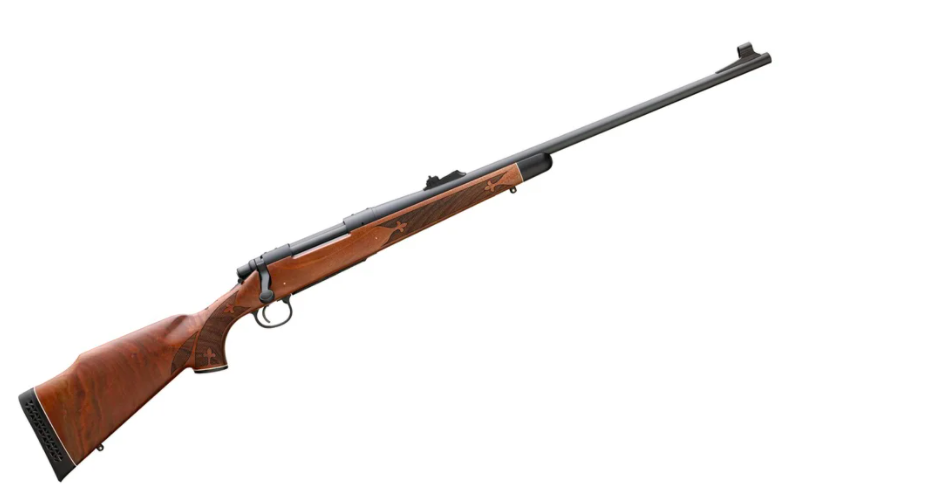
Remington’s M700 of 1962 was the first wildly successful “improvement” of the Mauser CRF bolt action that sold for a lot less. The 700 was a refinement of the earlier M721. To reduce manufacturing costs, Remington eliminated the flat bottom of the Mauser and Winchester receivers in favor of a round bottom that could be quickly turned on a lathe. The rifle’s action thus became a tube screwed into a tube in which another tube, the bolt, could be positioned easily for perfect, concentric alignment, aiding accuracy.
Remington wisely stuck with Mauser’s dual-locking lugs up front, but eliminated the external claw extractor. Instead, Big Green recessed the bolt face and put inside its lip a small C-shaped spring hook that would spring over the head of a chambered cartridge rim. This amounted to what’s called a push-feed system. The bolt face’s lower edge contacts the upper rim of a cartridge in the magazine, pushes it forward until it snaps free of the feed lips, then continues pushing it up the breech feed ramp and into the chamber. As the bolt nears the end of its forward travel, the cartridge is stopped by its chamber headspacing point and the extractor snaps over its rim.
Additionally, the Remington M700 featured a plunger ejector also positioned within the bolt face pocket. This little pin is pressured by an internal coil spring. It exerts constant pressure against the cartridge base on one side. When a cartridge, fired or unfired, is pulled back by the bolt, the plunger pushes it off the bolt face as soon as the neck or bullet are pulled free of the ejection port.
While this wasn’t the strongest extraction and ejection system in the world, it worked well enough that Remington’s M700 actions became the preferred foundation for dozens of custom, precision rifle builds. Remington made the most of its less robust push-feed system by emphasizing safety. Three rings of steel: The steel of the inset bolt face, the steel of the barrel breech into which the bolt face protruded, and the steel of the front receiver ring.
The downside to this system is potential jamming if the bolt is not cycled fully. Push a round free of the magazine but then retract the bolt before fully closing it to force the extractor hook over the cartridge rim, and you set yourself up for a jam. The loose cartridge rattles freely in the breech, you run the bolt back to pick up a fresh round and push it against the base of the round that’s still in the chamber. How often this has actually happened remains moot, but the potential inspires most dangerous game hunters to opt for a controlled-round-feed system.
5. 1860 Henry Rifle
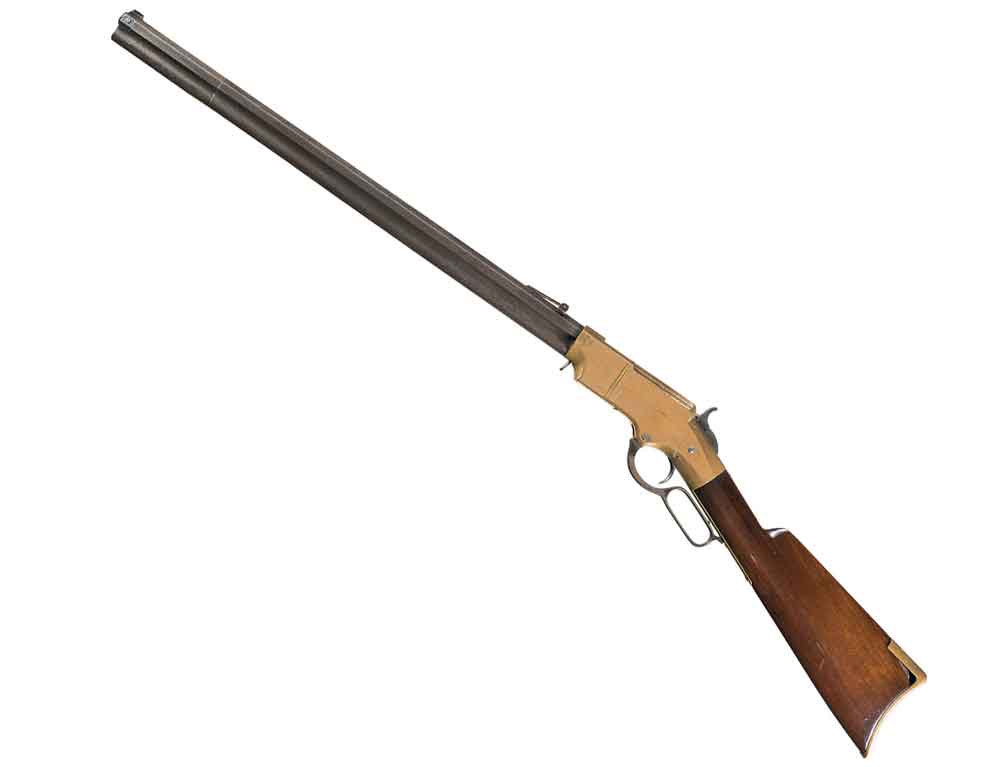
Benjamin Tyler Henry, like most rifle inventors, borrowed basic ideas that had come before. Specifically he borrowed from the Volcanic rifle of 1855, which was itself an improvement of Walter Hunt’s Volition Repeating Rifle of 1848. Both of these early rifles used an under lever to open and close the action. They also stored ammunition in tubular magazines under the barrel. And that was the problem: not the tubular magazine, but the ammo that went in it. It was called Rocket Ball ammo and consisted of a soft-lead bullet with a hollow base stuffed with powder and, later, an ignition cap. The concept was good, but Hunt could never cram in enough powder to give the slug sufficient velocity. On emerging from the muzzle those bullets were carrying just 56 to 85 foot-pounds of energy depending on caliber. That’s about what a 22 Short puts out.
Henry solved the problem and set the stage for firearms advancement well into the 21st century by creating the 44 Henry Flat cartridge, a brass rimfire case filled with about 27-grains of black powder and topped with a 200-grain bullet racing about 1,000 fps. Henry’s 16-round magazine and slick lever-action cycling system made this a formidable weapon. Cartridges were loaded into the tube at the top as are most tubular magazine 22 rimfires to this day. That made recharging a challenge when under fire in warfare, but in that era, front-loading of muzzleloaders was standard procedure anyway, and a heck of a lot slower than dropping 16 rounds down the tube. A Confederate colonel called the Henry a “damn Yankee rifle” that you loaded “on Sunday and shot all week!”
Many Sioux and Cheyenne warriors carried Henry’s against Custer’s troops at the Little Bighorn, augmenting their superior numbers with superior firepower against single-shot trapdoor Springfields. By that date, however, the Henry had been updated twice. In 1866, under the banner of the newly formed Winchester Repeating Arms Company, Henry added a side-gate loading door in the brass action and a walnut fore-end stock for more comfortable handling. This was the famous Yellow Boy. In 1873, Henry again updated the rifle with a steel receiver plus a centerfire version of the 44 rimfire. Strong, rugged, and reliable, this sporting rifle became known as The Gun That Won The West.
6. Savage M99
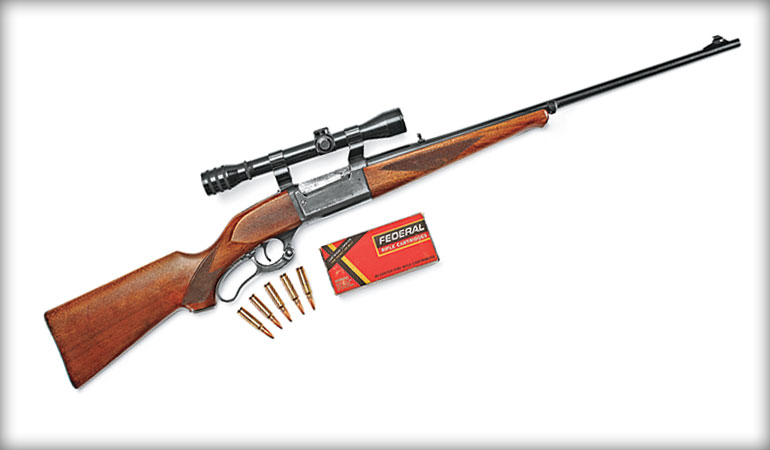
Arthur Savage—cattle baron, coffee grower, tire manufacturer, and inventor—brought the lever-action rifle into the 20th century via a vertical stack, rotary magazine located in the stock beneath the receiver of his hammerless Model 99. Because cartridges thus stacked did not rest with bullets against primers as in tubular magazines, they could be shaped with sharply pointed, ballistically efficient tips, conserving their energy for the long haul. And that evolved to be a lot of energy because the M99 action was strong enough to handle even the 65,000 psi chamber pressures of the 22-250 Remington. The 99’s bolt was even a controlled-round-feed, capturing each cartridge when it popped free from the magazine.
But Savage didn’t stop with just the rifle. With smokeless powder coming onto the market, he created his 303 Savage cartridge and topped it with efficient, energy conserving spitzer bullets. This was followed by the 300 Savage, parent cartridge for the later 308 Winchester, plus the 250-3000 Savage, the first commercial cartridge to break the 3,000 fps barrier. The cartridges were held in a rotary magazine that included a numerical brass counter showing how many rounds remained in the device. Later Savage modified the magazine to become a drop-out. They called it a clip magazine, the style now common in the most modern rifles and handguns. The Savage M99 was produced until 1999.
7. ArmaLite AR-15
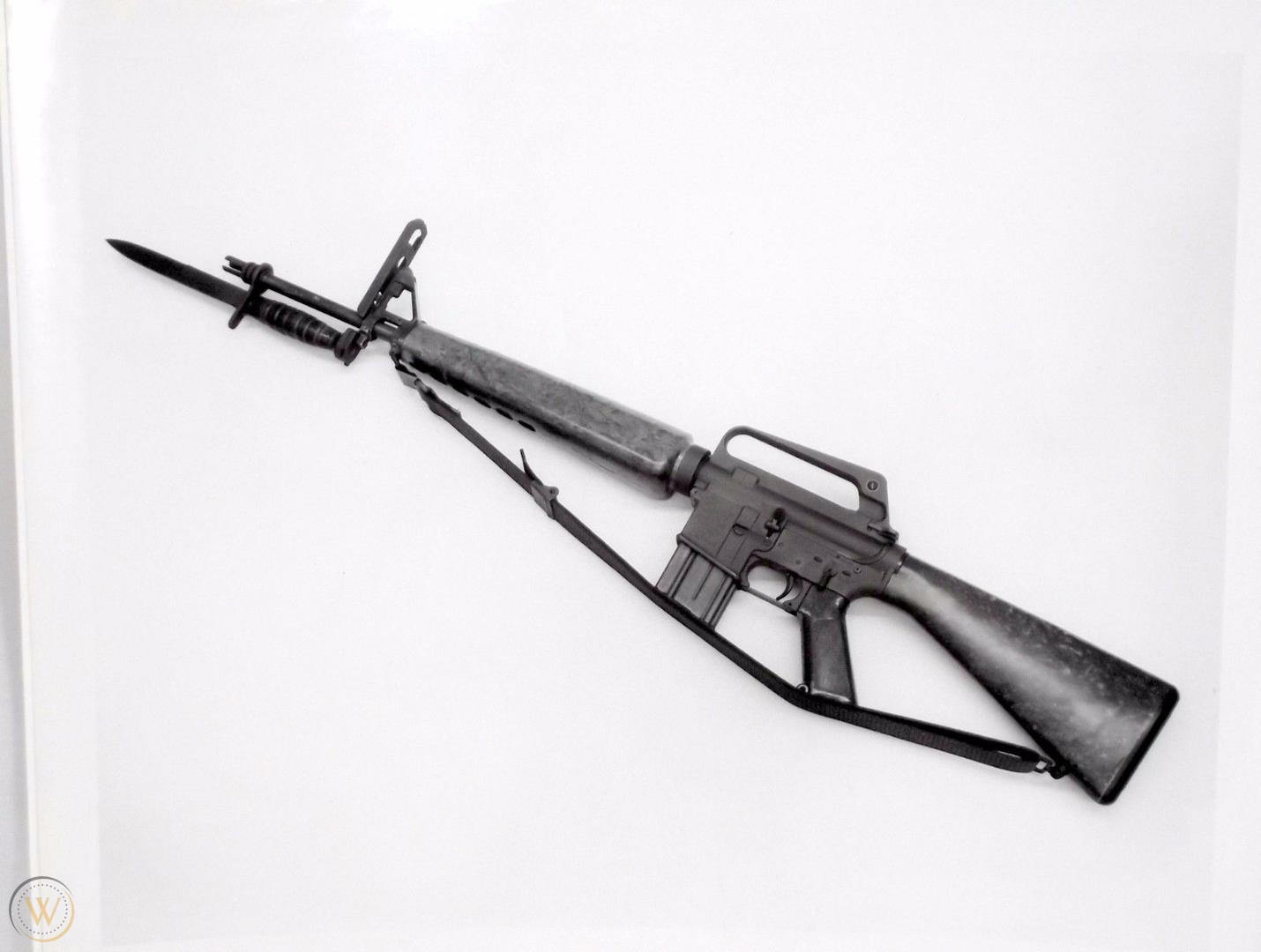
WWII veteran Eugene Stoner was an engineer for a company called ArmaLite in the mid 1950s when he designed something called the ArmaLite AR-10. It was an unusual looking, autoloading rifle with a detachable, large capacity magazine that handled the 7.62x51mm NATO. Our military, probably for the usual political reasons, rejected it in favor of the M14. Not to be deterred, ArmaLite modified the AR-10 into a smaller, lighter platform firing the new .223 Remington that, when adopted by the military, came to be known as the 5.56x45mm. They called this new rifle the AR-15 and sold manufacturing rights to Colt in 1959.
The Colt AR-15 was accepted by our military. And the shooting world was changed forever. The AR-15 looked and functioned like no other rifle before, incorporating a narrow gas tube atop the barrel to funnel high pressure gases back and drive a piston within the action to cycle it. A spring-loaded “buffer” tuber in the butt stock drives the bolt forward to pick up a fresh round and lock it into battery via a rotating bolt head. Cartridges feed up from the detachable magazine.
Equally important is the AR’s modularity among sporting rifles. Parts including stocks, grips, sights, bolt carriers, hand guards, and barrels can be easily swapped. The lower “unit” hinges open to expose and detach the “upper” which contains most of the action parts and barrel. Barrels can be chambered for a variety of cartridges of the right length and head/rim size. Recoil is straight back, reducing muzzle flip.
8. T/C Contender
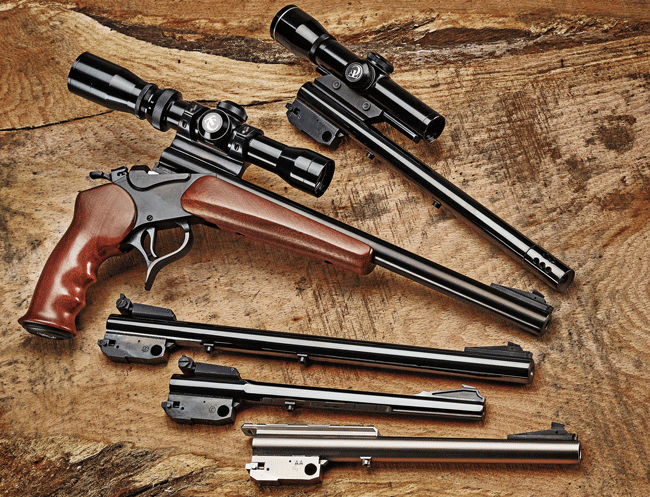
A break-action firearm was nothing new in the 1960s when Warren Center engineered what became known as the Thompson/Center Contender pistol, later expanded to include rifle-length barrels and butt stocks. What made the T/C break action “revolutionary” was its switch-barrel simplicity. Remove the fore-end stock, push out the hinge pin, and the barrel is free. Pop on a new barrel, replace the pin, and you have a “different” firearm. Sights, open or scope, are on the barrels, so there was no need to re-sight after a swap. A switch on the hammer swings between rimfire and centerfire. The T/C is truly the king of versatility among the best sporting rifles of all time.
Read Next: The Best Bolt-Action Rifle Bargains
9. Hoenig Rotary Round Action
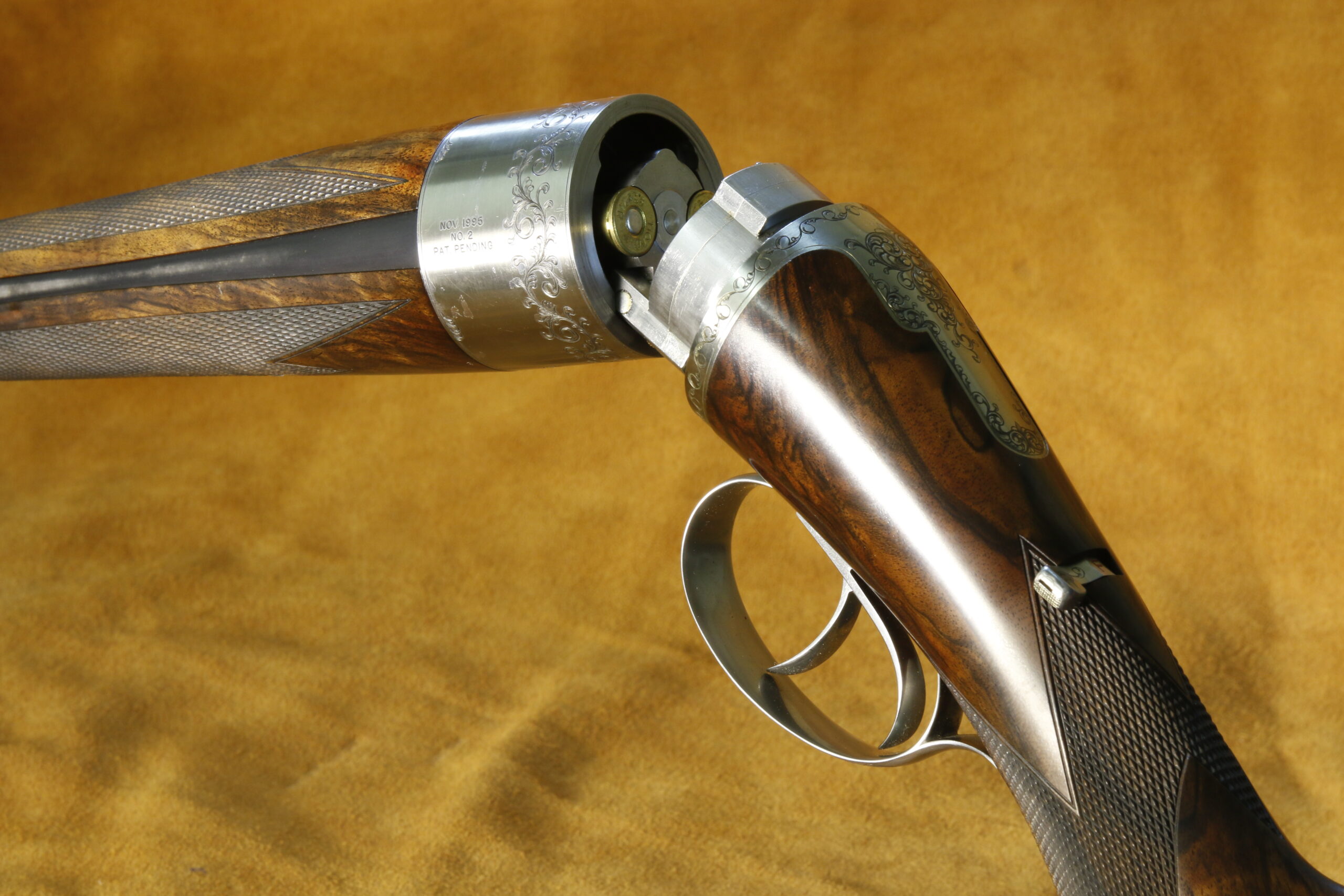
This obscure over/under double-barrel rifle will never touch the popularity of any of the other best sporting rifles covered here, but it wins major accolades for its unique design and brilliant engineering. The Hoenig is the product of one innovative mind, that of George Hoenig, a WWII refugee to U.S. shores who made the most of his new-found freedom to create a rifle action unlike any other before or since.
The rotary round action breech locks something like a cannon. Instead of a bolt moving fore and aft before turning locking lucks into recesses, the Hoenig’s barrels turn to engage massive locking lugs fixed on the action. A quarter turn twists the barrels free. They then hinge much like other double barrels for manual loading and unloading. Because the locking lugs are equidistant and in-line with the barrels, there is no torque to weaken the lockup over time.
Rotary Round Action doubles were made with various combinations of barrels, some chambered for identical cartridges, some different cartridges, some shotshells, some a rifle barrel over a shotgun barrel. Only 78 were completed before Hoenig and his associate, Owen Bartlett, retired from building them.
